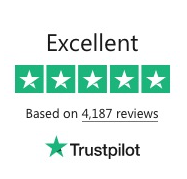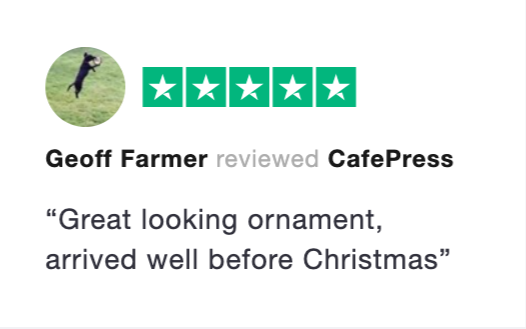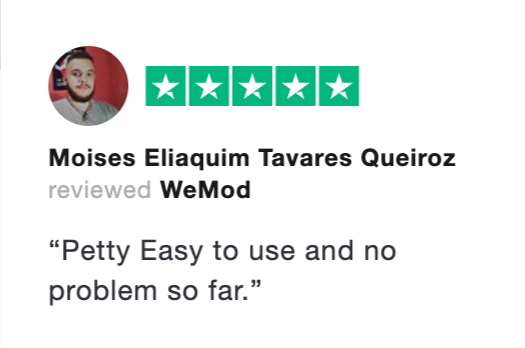Luke Priddis Charity Golf Day

March 6th saw the annual Luke Priddis Foundation Charity Golf day being held at the beautiful Penrith Golf Course in NSW and Scottish Pacific participated by sponsoring a hole at the event.
Luke Priddis is a well known ex NRL footballer who has first-hand experience with Autism after his son was diagnosed with the condition at a very early age. The foundation is about supporting parents and giving these beautiful children the skills to understand emotions. Most parents of Autistic children had never been told by their child ‘I love you’ or hugged for affection.
Sydney based Business Development Manager, Jodie Wootton, is a passionate supporter of the foundation, and not even a broken foot could stop her from taking to the course on the day.
Although our team didn’t place too well on the score card, a great day was had by all and Scottish Pacific are proud to support this extremely worthy cause.
Melbourne Run4Kids Charity run

On March 24th four of our Melbourne staff members participated in the 5-15km charity event, Run4Kids. The run for kids is coordinated by Steve Moneghetti , with all proceeds raised going towards the Royal Children’s Hospital Good Friday Appeal. This year there was over $2,000,000 raised by the sponsors and the participants.
It’s an extremely scenic course. Nick McAvoy, Arthur Athanasopoulous, John Baker-Cresswell and Andrew Cromwell, along with 30,000 other people, had the pleasure of running through the Domain Tunnel, over the Bolte Bridge and back through South Bank before finishing up in the Botanical Gardens.
Scottish Pacific provided discounted gym memberships to help the whole training process and matched the amount raised by the four runners by way of an additional donation to the charity.
SME Growth Index Series: Property downturn bites business owners
Our Scottish Pacific SME Growth Index is a twice-yearly snapshot of Australia’s small to medium sized business sectors showing cashflow issues that many businesses face today, below is the first of six key insights found in our March 2019 report:
Current property market conditions are clearly having an impact on business owners.
Almost half the SMEs (44.5%) say property market conditions are already making it harder for them to access business funding, likely due to softening house prices in major markets.
A further 35% haven’t yet felt the impact, but fully expect the housing price correction and broader property market conditions including slowing loan approvals will have a significant impact on their borrowing capacity.
When property market impact was last assessed in September 2017, 3 out of 4 SMEs said property prices were having no direct impact on their businesses. This round, only 1 in 5 SMEs said they had not yet seen a direct impact.
This minority of non-affected SMEs perhaps reflects how broad the base of Australia’s small business sector is, with more than two million enterprises across a wide range of industries and regional markets.
Property prices are having more impact on SMEs in Victoria and NSW (affecting 48% and 46% respectively), with Queensland small businesses (39%) the most buffered.
Declining or no-change SMEs are being hit harder by property market movements, with 54% of non-growth SMEs already impacted (compared to 36% of growth SMEs).
For these non-growth SMEs, finances are already stretched thin and they are feeling “when it rains it pours”. These are the businesses that currently need the most support to get through tough market conditions.
SMEs willing to pay more to avoid property security
More than 91% of SMEs would be prepared to pay a higher rate to obtain finance if they didn’t have to provide real estate security. This overwhelming sentiment is voiced at a time when a sharp correction in residential property prices is affecting capital cities, coupled with falling building approval data and predictions by analysts such as Core Logic and UBS of tough market conditions still to come.
Of the nine out of 10 business owners who say they would be willing to pay a higher rate for finance if they could avoid using property as security, almost two-thirds (65%) indicated they ‘definitely’ would be willing, and more than a quarter (26%) said ‘probably’.
Fewer than 1% of SMEs ‘definitely’ would not consider higher rates in place of borrowing against the family home, and just over 1.5% said it would be ‘unlikely’.
According to the Productivity Commission’s draft report into Australian financial system competition, a third to a half of Australian SME loan value is reliant on property security.
For the major banks, 35% of their small business lending (by loan value) is secured by real estate. For banks outside the majors this figure is higher, at almost 47%.
Given this data, and the Growth Index’s clear findings about SMEs’ unhappiness about using property security, it could be that many business owners are unaware they can use balance sheet assets instead of property – assets including equipment and invoices issued.
Property security one of top two frustrations
Annoyance about having to provide property as security was clear amongst SMEs – this was the second most common funding frustration (nominated by more than 78%), behind only loan conditions (just over 80%).
To this environment, add likely changes implemented due to the Royal Commission, and the impact of more stringent credit checks. SMEs looking to fund growth will have to factor in potential roadblocks around finance availability and using property as security.
The added impact of home borrowers potentially being charged fees to use a mortgage broker could also result in a major reshuffle when it comes to how small business owners manage their business growth.
Australian Bureau of Statistics data shows a more than 6% drop in home loans in December 2018, with a fall of about 20% for 2018 (the worst annual fall since the Global Financial Crisis).
While property prices and some market conditions are cyclical, it’s important to note Australia’s long-term downtrend in the rate of home ownership.
A not-too-distant future where there may be more entrepreneurs renting than buying means that increasingly business owners will have to consider business borrowing secured against assets other than property.
More stringent lending conditions, along with a cooling property market, will impact on SME owners who need to use their home as security against their business borrowing.
For any business owner who feels compelled to rely on providing property as security for their business loans, the credit squeeze may well be on.
SME Growth Index Series: How Politicians Can Win the SME Vote
Our Scottish Pacific SME Growth Index is a twice-yearly snapshot of Australia’s small to medium sized business sectors showing cashflow issues that many businesses face today, below is the one of six key insights found in our March 2019 report:
Over the past six years, the SME Growth Index has repeatedly highlighted that company tax cuts and a reduced regulatory burden are the most pressing reforms SMEs are crying out for.
Nothing has changed this round.
With a Federal Election set to be held around May 2019, SMEs were clear about their expectations of what the next government should prioritise for the small and medium business sector.
Company tax cuts was the top response, with 27% of business owners saying this should be the new parliament’s top SME priority.
More than 23% said their main request was for the instant asset write-off to be further expanded.
These respondents should be pleased that this initiative has already been announced, in early 2019 – this provision will be extended for the 2019/20 financial year, with an expanded scope to include accelerated depreciation on assets valued up to A$25,000 (the previous limit was A$20,000).
One in five SMEs want the newly elected government to prioritise cutting red tape by reducing their administrative and regulatory burden.
SMEs were far more concerned about seeing government action on things they see affecting their business on a day-to-day basis, rather than big picture projects.
Company tax cuts was the top response, with 27% of business owners saying this should be the new parliament’s top SME priority.
Only 7% thought reducing SME energy costs should be the main focus for the new parliament.
Despite significant publicity around the announcement of a $2 billion SME lending fund, not even 3% of respondents felt that implementing this fund should be the top priority.
Similarly, few SMEs thought the first order of business should be extending legislation to ease late payment times and mandate participation in the Australian Supplier Payment Code, with just over 2% naming it as their preferred top post-election priority.
Working on SME infrastructure and education was off business owners’ agenda.
Dedicated SME infrastructure such as fast tracking the NBN (less than 2%) and educating on cybersecurity (1%) are seen by SMES as unimportant for the new government relative to tax cuts and cutting red tape.
This is despite a recent Chubb and YouGov survey, Too Small to Fail? Australia SME Cyber Preparedness Report, that found 71% of SMEs have experienced a cyber-attack or error in the past 12 months and 45% of SME owners are not confident that their employees who have access to sensitive data are fully aware of their data privacy responsibilities.
Finally, only one in 10 SMEs named further BAS simplification as their top priority. Government efforts to simplify business activity statements must be starting to hit the mark, because in 2017 streamlining BAS was named as the top government priority by one in four business owners.
SMEs make it quite clear to all levels of government that they want to see changes that have an everyday positive impact on how they do business. This is the key to energising the sector, encouraging investment and driving growth
and innovation.
Such measures could include simplifying the complex tax system and cutting red tape, and on a state basis getting rid of the “growth inhibitor” payroll tax – these initiatives would have the biggest daily positive impact for Australia’s small to medium businesses.
SME Growth Index Series: SMEs Outline Impact of Royal Commission
Our Scottish Pacific SME Growth Index is a twice-yearly snapshot of Australia’s small to medium sized business sectors showing cashflow issues that many businesses face today, below is one of six key insights found in our March 2019 report:
The anxiety and concern of the SME sector is evident. More than half the SMEs polled (56%) say the Banking Royal Commission has made, or will make, it harder for them to access business funding.
One in five (22%) SMEs said it was already harder in 2018 for them to access funds due to the lending environment created by revelations highlighted at the Royal Commission hearings.
Almost 34% expect this lending environment will soon have a negative impact on their accessto funding.
Only 12% said the Royal Commission had made no impact on their access to finance.
Based on these sentiments, many SMEs fear a ‘credit crunch’.
Negative public sentiment surrounding the banks as a result of the Royal Commission may be reflected in the funding frustrations data. Almost half of SMEs say they are frustrated by their funder being hard to deal with, and a quarter don’t feel secure with their lender.
The current financial and political environment makes it important for SME owners to ensure they find the right finance terms and the right security to suit their business.
How they make these important funding decisions may change, given one of the more hotly debated recommendations of the Royal Commission – removing brokers’ trail commission for home loans.
While the Royal Commission’s focus was on residential mortgage lending, one concern is that if changes are introduced that make the mortgage broking industry unviable, this will flow through to the commercial finance broking sector which plays a crucial role in helping SMEs secure business funding.
Broker industry associations fear that if a fee for service model is borne by the consumer, this is likely to decrease competition and potentially drive borrowers straight back to the big banks.
Adding a broker fee for service could have a detrimental impact on any SME already unable to get bank funding. Brokers put non-bank lending alternatives to their clients, providing viable solutions for business owners when the banks can’t or won’t lend to them.
It is advisers such as brokers and accountants who have an intimate understanding of their clients’ businesses and can help small businesses tailor the best funding option by making them aware of how the different products work
and what the risks and benefits are.
Any threat to the livelihood of essentially 20,000 small businesses – brokers – would have a negative impact on the SME sector.
With the Productivity Commission supporting a solution that retains a commercially viable broker sector, and the Prime Minister and Federal Opposition speaking out in support of brokers, it is hoped that the solution to the trailing commission issue raised in the Royal Commission is one that does not hurt the SME sector.
Anecdotally, in the first quarter of 2019 a range of alternative lenders have reported increased interest in their offerings, with funding enquiries showing that small enterprises and even medium
sized businesses are saying that in the wake of the Royal Commission, bank funding has become even harder to get.
This round, 58% of SME Growth Index respondents say that by far the greatest reason they seek new finance is to fund their expansion opportunities.
The easier it is for SMEs to get funds, the stronger the Australian economy will grow.
Given recent economic forecasts, it should be a government and business community priority to make it easier, not more difficult, for business owners to access funds.
SME Growth Index Series: Non-banks could be top growth funders by 2020
Our Scottish Pacific SME Growth Index is a twice-yearly snapshot of Australia’s small to medium sized business sectors showing cashflow issues that many businesses face today, below is one of six key insights found in our March 2019 report:
For the first time in the five years and 10 rounds of the Scottish Pacific Business Finance SME Growth Index, the number of SMEs who turn to their main bank to fund growth has dropped under the 20% mark.
Research was conducted from November 2018 to January 2019, after publication of the Banking Royal Commission’s interim report and during the last round of its public hearings.
East & Partners notes that traditional bank borrowing as a primary source of new capital expenditure funding continues to trend lower as more businesses ‘shop around’ for customised funding solutions to help grow their operations.
Significantly fewer SMEs, when asked “how are you planning to fund business growth?”, said they’d approach their main bank (19.5%, a drop of more than three percentage points from September 2018).
When polling began in September 2014, just over 38% of SMEs were turning to their main relationship bank to fund their planned growth.
East & Partners forecasts that if this downward trend continues, alternative lenders will overtake main relationship banks as the key source of growth funding by the second half of 2020.
This round, the biggest gains when it comes to funding growth are for the non-bank lending sector, the first choice for almost 18% of business owners (up from 15% six months ago).
This trend towards non-bank lending is supported by SME intention data.
In March 2018, 43.5% of SMEs said they would not consider using non-bank lending. Twelve months on, not even one-third of business owners are in this category.
The most popular alternative finance product nominated by SMEs to fund their growth was trade and import finance (currently used by almost 33% of all businesses polled), followed by debtor or invoice finance (9%).
Few businesses in the $1-20m revenue category say they are using merchant cash advance (2.5%), peer to peer lending (1.4%), crowd-funding (0.9%) or other online lending options (0.7%).
Previous Index research revealed that 96% of SMEs are drawn to alternative lenders mainly because of fast credit approval and reduced compliance, and the advantage of not having to borrow against the business owner’s home.
It also found that growth SMEs are five times more likely than non-growth SMEs to use an alternative funder in preference to a bank.
Overall, findings this round show that the traditional reluctance of SMEs to move beyond tried and tested working capital management strategies is gradually shifting.
However, there is still strong room for growth for non-banks in the SME finance space: two-thirds of SMEs said they did not use non-bank lending options in 2018, but more than half of these said they’d be open to it in the future.
Alternative finance is building momentum, underlined by the clear reluctance of business owners to borrow against property (see Insight 1).
Since tracking began in 2014, it’s clear that ultimately business owners rely heavily on their own equity.
This round, the percentage of owners dipping into their own funds, always around 90%, has fallen to 84%, a drop of more than five percentage points from six months ago.
This has been driven by the declining or no change SME owner segment, which showed a significant dip in using their own equity to fund their business, from more than 86% last round to 63% now.
East & Partners pinpointed a high proportion of SMEs relying on ‘dumb debt’ (such as personal credit cards) or owners’ equity to fund new productive capacity, commenting that these strategies can limit new business investment opportunities.
They note the potential for latent non-bank credit demand to be realised, with more than 35% of SMEs not yet having ventured beyond traditional bank funding or owners’ equity in the last year, yet indicating they are willing to do so.
Small businesses are seemingly saying to non-bank lenders “make me an offer – I’m listening”.
Business Funding Guide

The Australian Small Business and Family Enterprise Ombudsman (ASBFEO) and Scottish Pacific Business Finance have developed an Australian-first independent Business Funding Guide, which gives advisors the tools to help businesses become finance fit and choose the right funding option. A companion guide, FitsME: Essential Guide to Business Funding, has also been produced to give business owners the best chance of funding success.
The Business Funding Guide covers:
- The 6 key indicators that a business may need funding
- How to prepare for a funding application: getting business accounts in order, write/review the business plan, conduct a finance fitness check
- Key trigger questions to start a conversation about funding options
- The 3 questions to ask a lender when a loan application has been rejected
Click here to download the Business Funding Guide – a comprehensive overview for advisors on preparing their clients for funding.
Click here to download FitsME: Essential Guide to Business Funding – an easy-to-follow guide designed to help time-poor businesses prepare for funding, and ensure they’re selecting the solution that best suits.
The Top Funding Frustrations for Australian Business Owners in 2019
A steady supply of working capital is vital to the success of SMEs. Whether it’s for business expansion, investing in new equipment or any other reason, companies need funding to stay afloat.
Unfortunately, obtaining funding has become increasingly difficult in recent years. Scottish Pacific’s March 2019 SME Growth Index discovered that 1 in 5 SMEs said it was more difficult to access funding in 2018, and 1 in 3 said it will get harder to do so in the future.
In this post, we’ll discuss the top funding frustrations for Australian business owners in 2019, as well as some effective solutions for generating capital.
The Big 3
An overwhelming majority of SMEs (87%) are frustrated with their current business funding strategies, according to the March 2019 SME Growth Index. While there were numerous factors that created frustration, three issues stood out the most.
- There are unfavorable loan conditions, with just over 80% of SMEs citing this as a major frustration. More specifically, the Index found, “SMEs funded by banks are three to four times more likely to be frustrated by loan conditions than those using non-bank lenders as their primary funders.”
- There’s the issue of having to provide property security, with 79% of business owners saying it’s a frustration. Property downturns throughout much of the country — especially in Victoria and NSW — have had a negative impact on business funding. “Almost half the SMEs (44.5%) say property market conditions are already making it harder for them to access business funding, likely due to softening house prices in major markets.”The problem is that property security is often used as collateral by major banks to protect themselves from loan default. In fact, 35% of their small business lending is secured by real estate. And that number is even higher for smaller banks where it’s nearly 47%. The frustration is so big that more than 91% of business owners are willing to pay higher interest to avoid the hassle of dealing with property security.
- There’s loan inflexibility, with 73% of SMEs claiming it’s a frustration. While there are a few reasons for this issue, one of the most notable is the Royal Commission, which was designed to cut back on misconduct in the banking and financial services industries. Because of it, many business owners fear a “credit crunch” that will make it significantly more difficult to obtain funding than in the past.And just like unfavorable loan conditions, there’s a trend where business owners feel a deeper frustration dealing with bank lenders than they do with non-bank lenders. In fact, “SMEs using bank funding are almost four times more likely to be frustrated by a lack of flexibility in funding.”
Other Factors
Beyond that, 48% of business owners feel frustrated about short loan terms, and 47% feel frustrated dealing with lenders. Many companies are finding themselves in a predicament where they’re dealing with a limited timeframe to repay their loans. Short loan tenors give them less wiggle room and can create a lot of stress.
As for frustration dealing with lenders, one of the main catalysts for this sentiment is the Royal Commission. In an effort to prevent malpractice among banks and financial services firms, it’s created an environment where lenders are more selective about who they give money to. In turn, it’s creating a hardship for many SMEs.
Other lesser frustrations that are still worth mentioning include:
- Not feeling secure with a lender – Nearly 24% of business owners
- Lender doesn’t meet all of their needs – 16%
- Having to dip into personal finances to fund growth – 6%
Main Reasons Why SMEs Seek Funding
So what exactly motivates Australian business owners to seek credit? The March 2019 SME Growth Index found there are 4 primary triggers.
One is to expand their business, with this being the reason for 58% of respondents. Ongoing access to capital and periodic cash flow injections are both critical to the health and longevity of SMEs, and many simply don’t have the finances to come up with the money on their own. Therefore, they seek out a lender who can help sustain them throughout key growth stages.
Another is to purchase new machinery or equipment, with this being the main reason for 53% of respondents. Everything from company vehicles and production machinery to computers and electronics can play a role in an SME’s long-term success. So they need a reliable means of financing these items.
Loss of a major customer is the reason behind 47% of business owners seeking funding. This puts an SME in a tough position, but having adequate funding can help them weather the storm and get back on track.
And finally, growth in customer demand triggers 25% to look for capital. In some cases, SMEs experience considerable growth and need funding to keep up with demand.
How to Ensure Business Owners Have Access to the Capital They Need
The data from this report clearly shows that SMEs are more likely to be frustrated when using banks rather than non-bank lenders. As we mentioned earlier, unfavorable loan conditions, having to deal with property security and loan inflexibility all soured the experience.
This isn’t to say that traditional banks are never the right choice. But given the current climate with property downturns and the Royal Commission, dealing with banks is certainly a lot trickier than it used to be. So it’s wise for business owners to explore their options with non-bank lenders.
The Australian Small Business and Family Enterprise Ombudsman (ASBFEO) and Scottish Pacific Business Finance have developed an Australian-first independent Business Funding Guide, which gives advisors the tools to help businesses become finance fit and choose the right funding option. A companion guide, FitsME: Essential Guide to Business Funding, has also been produced to give business owners the best chance of funding success.
The Business Funding Guide covers:
- The 6 key indicators that a business may need funding
- How to prepare for a funding application: getting business accounts in order, write/review the business plan, conduct a finance fitness check
- Key trigger questions to start a conversation about funding options
- The 3 questions to ask a lender when a loan application has been rejected
Three financing solutions that immediately come to mind for SMEs to access working capital include:
1. Debtor Finance
One option that countless companies have had success with is debtor finance, which is a line of credit that’s secured by outstanding accounts receivable. Rather than having to deal with property security like many banks require, this allows SMEs to use their outstanding invoices as collateral instead.
It involves a simple, three-step process.
- Upload an invoice – The same one that’s sent to a client is sent to the lender.
- Wait for approval – This typically happens within 24 hours. Once approved, a business owner receives up to 95% of the value of approved invoices, less any fees.
- Receive a cash advancement – The remaining 5% is made available once the client pays in full.
2. Peer-to-Peer Lending
Driven by advancing technology, peer-to-peer lending involves using a platform to connect borrowers and investors. That way borrowers can obtain the financing they need, and investors can make a profit without either party having to go through a traditional bank.
Doing so takes the institution out of the equation and gives borrowers a great alternative that wasn’t available in the past. Check out this guide from The Balance to learn about 8 of the top peer-to-peer lending sites in 2019.
3. Equipment Financing and Capital Raising
Financing that is linked to your working assets allows businesses to not only fund the next vital purchase to progress their growth and prosperity, but can also be used for capital raising and security for funding even after the assets have been purchased.
Some financiers, such as Scottish Pacific, will lend against a variety of specialised equipment, fund second-hand equipment purchases, and provide solutions to importing equipment from overseas.
Overcoming Funding Frustrations
You could make the argument that obtaining business capital is harder than it’s been in a long time. While there are a number of reasons for this, two of the biggest are the property downturn throughout major areas in Australia and the Royal Commission.
Many SMEs are in a difficult position where they feel increasingly frustrated going the conventional route of seeking funding from banks. Fortunately, there are other alternatives, with debtor finance and peer-to-peer lending both being viable options.
What’s your top funding frustration at the moment? Please share your thoughts and find out how we can help here, or call us on 1300 505 883
SME Growth Index Insight Series: SME revenue sentiment hits two-year high
Our Scottish Pacific SME Growth Index is a twice-yearly snapshot of Australia’s small to medium sized business sectors showing cashflow issues that many businesses face today, below is one of six key insights found in our September 2019 report:
Positive growth sentiment continues to build, with a two-and-a-half year high in SMEs expecting revenue to increase – but there is a marked city-country divide.
More than half Australia’s SMEs (54.6%) forecast positive growth for the second half of 2019, with an average revenue increase of 5.1%.
One in fie are flaging revenue decline, at an average of -5.7%. A quarter of businesses forecast no change in revenue.
When the whole SME market (whether growing, declining or stable) is taken into account, the forecast increase in revenue averaged 2.7%, stronger than at any time since March 2016.
While this figue is well short of the 4.9% forecast revenue growth recorded in 2014, it is more than double that forecast in March 2019 (1.8%) and September 2018 (1.1%).
A tale of two economies: metro versus regional
SMEs in rural and regional areas are doing it tougher than their metropolitan counterparts.
Only 47.3% of regional business owners expect positive revenue growth for the remainder of 2019, at an average of 3.1%. More than a quarter (27%) expect revenue to decline, by an average of 6.8%.
The metropolitan SME sector is more buoyant. 57.7% of metropolitan enterprises expect positive growth, forecasting an average increase of 5.8%. Just under one in fie (18.1%) expect revenue to decline, by 5% on average.
SME Growth Index trend analysis indicates that, consistently since 2014,
SMEs in regional areas across Australia have been less positive about revenue growth than their metropolitan counterparts.
Since 2014, there has been a 10 percentage point fall in regional SMEs forecasting positive growth (from 58.3% to 47.3%) and only a six percentage point fall for metropolitan SMEs (from 64.4% to 57.7%).
SME sentiment defies broader outlook
The proportion of SMEs who identify as being in a consolidating or contracting phase of business has fallen below 20% for the first time since the first round of the Index in 2014, with 9.8% saying they are consolidating and 9.7% saying they are contracting.
This is an improvement from 18 months ago, when around a quarter of SMEs were consolidating or contracting (12.2% and 12.3% respectively).
Four in 10 SMEs identify as being in a growth phase. Almost a third say their business is stable.
While recorded SME revenue growth sentiment is at its highest since early 2016, this positive outlook is set against the backdrop of an Australian economy that broadly continues to struggle with sub optimal growth.
Gross Domestic Product (GDP) expanded 1.7% year-on-year in Q1 2019, the slowest pace since the immediate aftermath of the 2008 Global Financial Crisis. The domestic retail market remains sluggish and capital expenditure subdued.
Real private consumption slowed to its lowest level since Q2 2013 at 1.8% year-on-year, affected by a protracted period of low-income growth and declining housing prices especially in Melbourne and Sydney. Concern around economic conditions may be masked by tax cuts and lower interest rates propping up consumer confidence. These two moods are reflected in the Index, revenue expectation extremes expanding this round to – +7.7% for positive growth and –12.8% for negative growth.
East & Partners also note that over the five-year life of the Index, the average number of full-time employees of SME respondents has fallen significantly to 68 FTE, down from 88 in 2014.
An emerging trend in recent rounds is the rising number of declining growth / no change SMEs who have plans to invest in business growth. One in five declining growth / no change SMEs plan to grow but don’t know how they will fund their growth – whereas only 5.8% of growth SMEs have yet to decide on the debt / equity mix they will use to fund their new growth.
In an effort to inform business owners about options beyond their own equity, the Australian Small Business and Family Enterprise Ombudsman (ASBFEO) and Scottish Pacific have created a Business Funding Guide to broaden the SME sector’s knowledge about business funding options.
SME Index Insight Series: Cash flow being “squeezed from both ends”
Our Scottish Pacific SME Growth Index is a twice-yearly snapshot of Australia’s small to medium sized business sectors showing cashflow issues that many businesses face today, below is the third of six key insights found in our September 2018 report:
Cash flow being “squeezed from both ends
With business owners saying cash flow is the dominant issue keeping them up at night, we asked what caused the biggest negative impact on their cash flow over the past 12 months.*
SMEs continue to pinpoint Government red tape and compliance issues as the main culprit (nominated by 73%, across the total market of growth, consolidating and declining SMEs). Previous rounds of the SME Growth Index pinpointed that red tape and compliance concerns revolved around BAS reporting, the Fair Work Act and company tax.
The other top cash flow issues were the dual problems of customers paying late (43%) and suppliers reducing payment terms (40%).
So SMEs are feeling the pressure from both ends of the supply chain. This places major strains on efficient working capital management.
There has been a noticeable tightening in cash flow throughout 2018, despite a low interest rate environment and broadly improving operating conditions and business confidence.
More than one in four SMEs (27%) said they had difficulty meeting tax payments on time and one in five (21%) were unable to take on new work and capital expenditure due to cash flow restrictions.
The opportunity cost of sub-optimal cash flow continues to hold back growth SMEs, most of whom believe they could increase turnover if they could improve their cash flow.
Respondents were asked what percentage of revenue was foregone due to poor cash flow, and on average this was 17%, a significant impact on any SME’s bottom line.
East & Partners have extrapolated this figure to estimate that poor cash flow cost Australia’s SME sector A$234.6 billion in lost revenue in 2017.**
Almost all SMEs (92%) said if cash flow had been better in the past 12 months they would have generated more revenue, with the remainder reporting no cash flow issues in the past 12 months.
More than half (55%) indicated that revenues could have increased by 5-25% if cash flow improved.
For growth businesses only, almost half (44%) could have grown by 10-25% with better cash flow and one in five think they missed out on a 25-50% revenue increase.
Over the past 12 months, initiatives by ASBFEO’s team led by Ombudsman Kate Carnell have highlighted the need to improve access to finance and business conditions for SMEs. This includes supporting Commonwealth Government moves to ensure subcontracts on government projects are paid in 30 days or less.
SME Growth Index results show that SMEs’ cash flow situation remains troubling and further initiatives should be supported.
Within the SME sector, there’s plenty on the table for any business which can improve its cash flow.
* More than one response was allowed
** The total revenue figure was derived by taking estimated revenue for the whole economy ($5.4 trillion) and holding the SME proportion at 27.5% of total revenue (A$1.49 trillion), multiplied by the proportion of SMEs that report cash flow could be better, multiplied against the average revenue percentage improvement if cash flow was better.
Like to know more? To download the latest copy of our SME Growth Index, click here.
Our next release will be available in March 2019 and will be available on our website.






